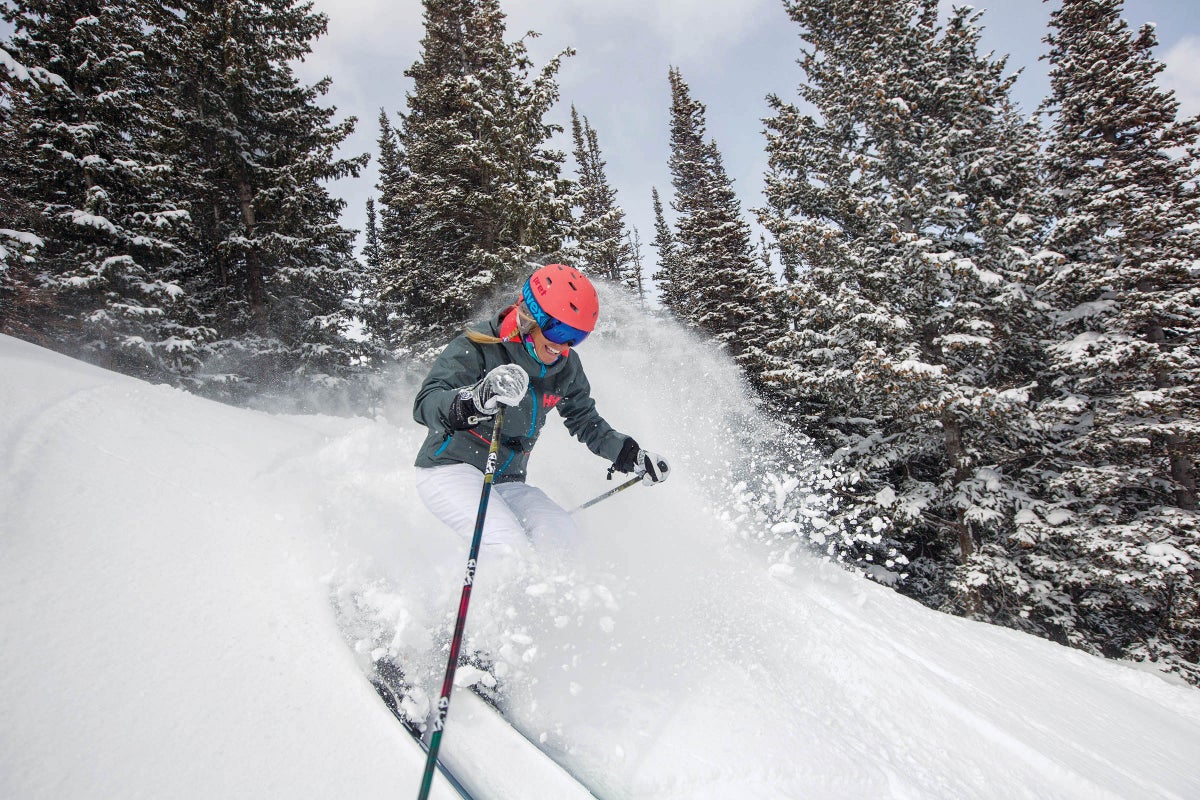Products You May Like
If you read SKI’s Gear Guide cover to cover at the start of each ski season, first off, we applaud you. There’s enough test data and technical lingo in there to make anyone’s head spin. We’re such gear nerds that we can be guilty of taking deep dives into a specific ski technology and forget to convey our passionate feelings about skis in plain English. If you’re clicking through the 2023 Winter Gear Guide and wondering what the heck “Forgiveness” or “Hard-Snow Integrity” means when it comes to skis, or what SKI’s testers are looking for when they rank and review skis in specific scoring categories, here’s your cheat sheet. Read, learn, then put this knowledge to good use the next time you have a chance to demo skis.
Section divider
Hard-Snow Integrity
- Can this ski be trusted to hold an edge on hard snow and on groomed runs?
- Does the ski respond with a predictable and smooth flex on a hard snow surface when pressured by the skier?
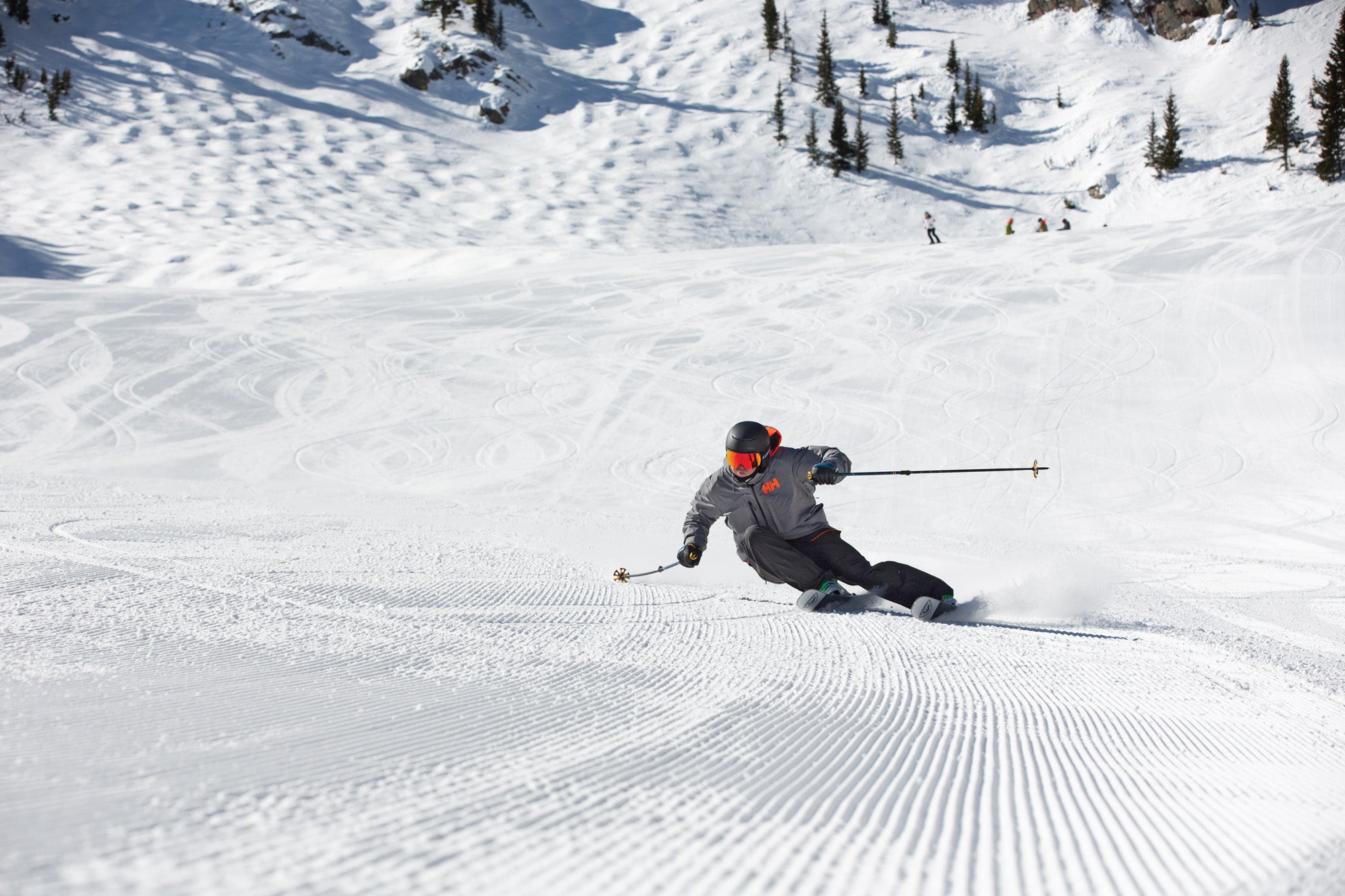
Testers judge how dependable, consistent, and smooth the ski performs on hard snow (packed corduroy, man-made snow, ice, etc.). Skis that don’t hold an edge, flex, or respond in a predictable manner on hard-snow surfaces score lower in the Hard-Snow Integrity category.
What influences a ski’s performance on hard snow?
- Skis with metal in the core and beefier sidewall or core constructions tend to be more dependable and predictable on hard-snow surfaces, since they require the skier to pressure the ski more.
- Skis with less rocker and more camber (more effective edge) offer better edge grip on hard snow.
Related: Ski and Boot Terminology Explained
Section divider
Carving
- How easy and intuitive is it to get this ski on edge?
- Does it pull you into a carve, or do you have to work for it?
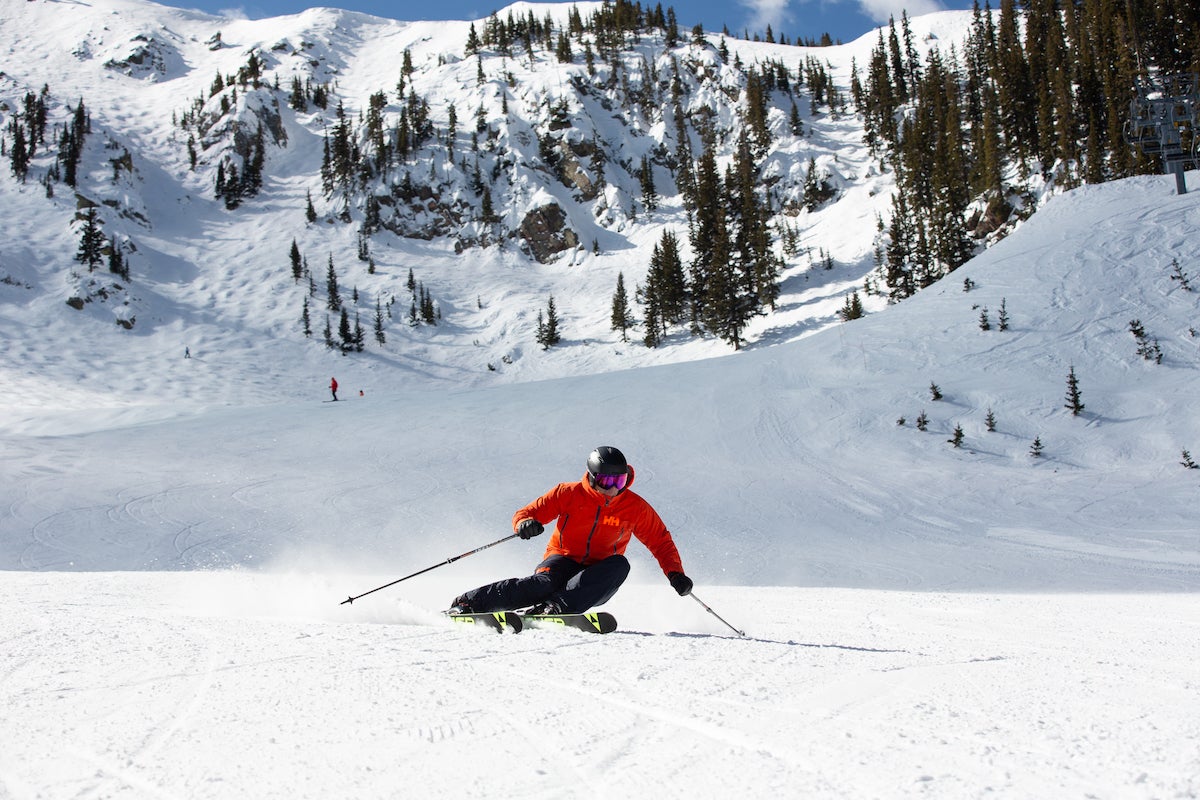
This scoring category only applies to the skis tested in the Frontside and All-Mountain categories. When judging a ski’s knack for carving (or carvability), they’re assessing how easy it is to get a ski to carve and how well or reliably it performs when you bend the ski to carve an arc.
Read on: The best frontside skis of the year
What influences a ski’s carving ability?
- A ski’s sidecut is primarily responsible for a ski’s carving performance. Narrower waisted skis with defined hourglass shapes (tip and tail are wider than the waist) are designed to carve and some of these skis will pull you into an arced turn if you pressure it appropriately.
- Skis with metal in the core, full sandwich sidewall construction, and little or no tip and tail rocker generally perform better on edge and in a carve
Section divider
Versatility
- Does the ski perform well in a variety of snow conditions and terrain?
- Does the ski accommodate various turn shapes and skiing techniques?
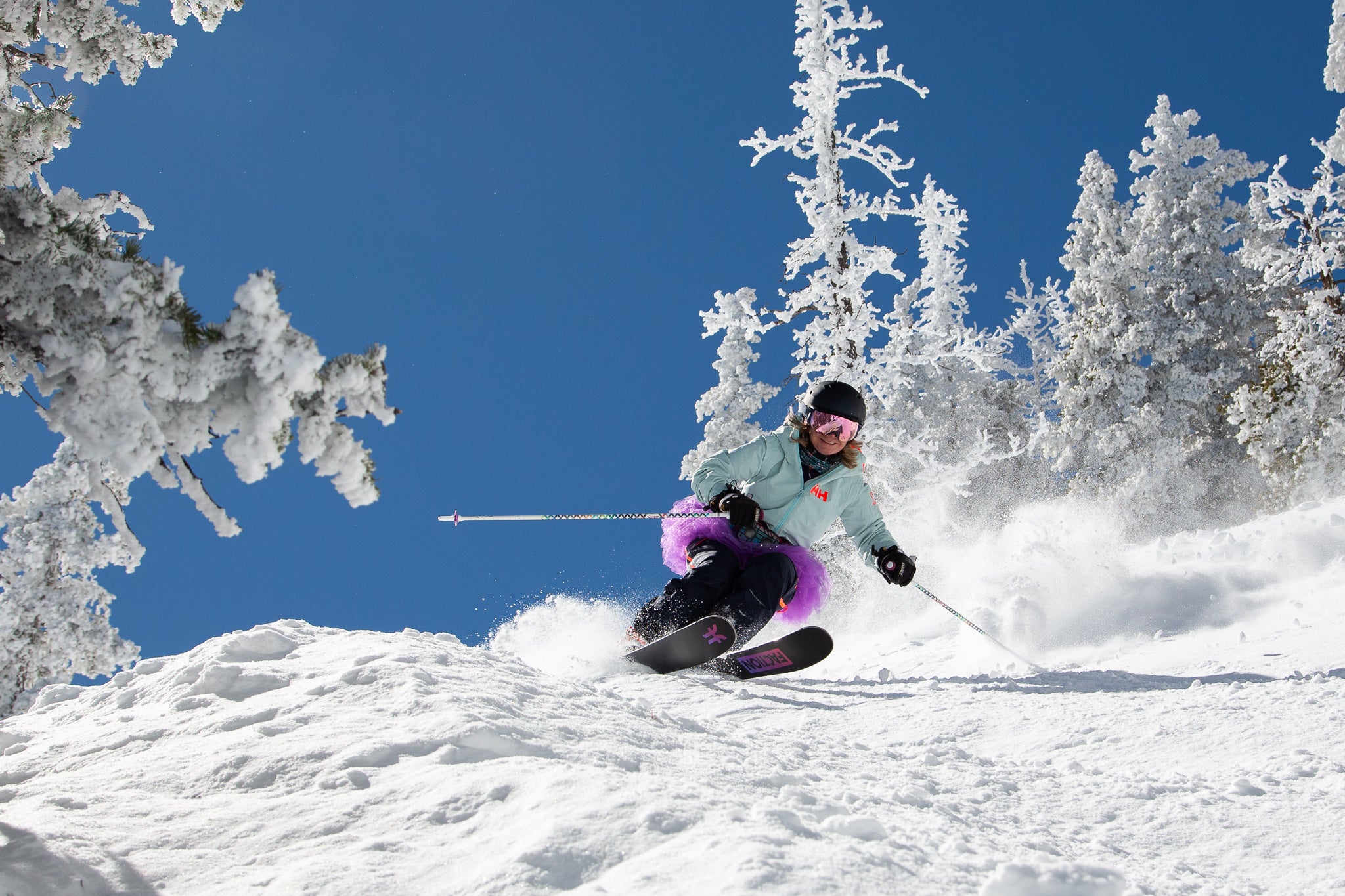
Testers assess how consistently a ski performs in a variety of snow conditions and on different parts of the mountain. They test the ski’s ability to handle groomed runs, bumps, glades, steeps, short turns, large turns, hard snow, crud, slush, and powder. A ski that demonstrates obvious weaknesses in any of these areas is marked lower in the Versatility category.
What influences a ski’s versatility?
- All-mountain skis with moderate waist widths (85mm-105mm) are better able to tackle a variety of conditions; they’re still narrow enough and have enough camber to perform well on hard snow and groomed runs, but they’re wide enough and have enough rocker to perform well in mixed snow conditions and variable terrain.
- Skis featuring a construction combination of metal and wood tend to be the most versatile.
- Skis featuring moderate tip rocker and traditional camber underfoot tend to be versatile because they have a good balance between flotation and edge hold.
Section divider
Crud Performance
- Does the ski perform well in chopped-up snow conditions off-piste?
- Can the ski plow through snow clumps and smooth out the ride in crud?
- Does the ski make skiing crud manageable, effortless, or even enjoyable?
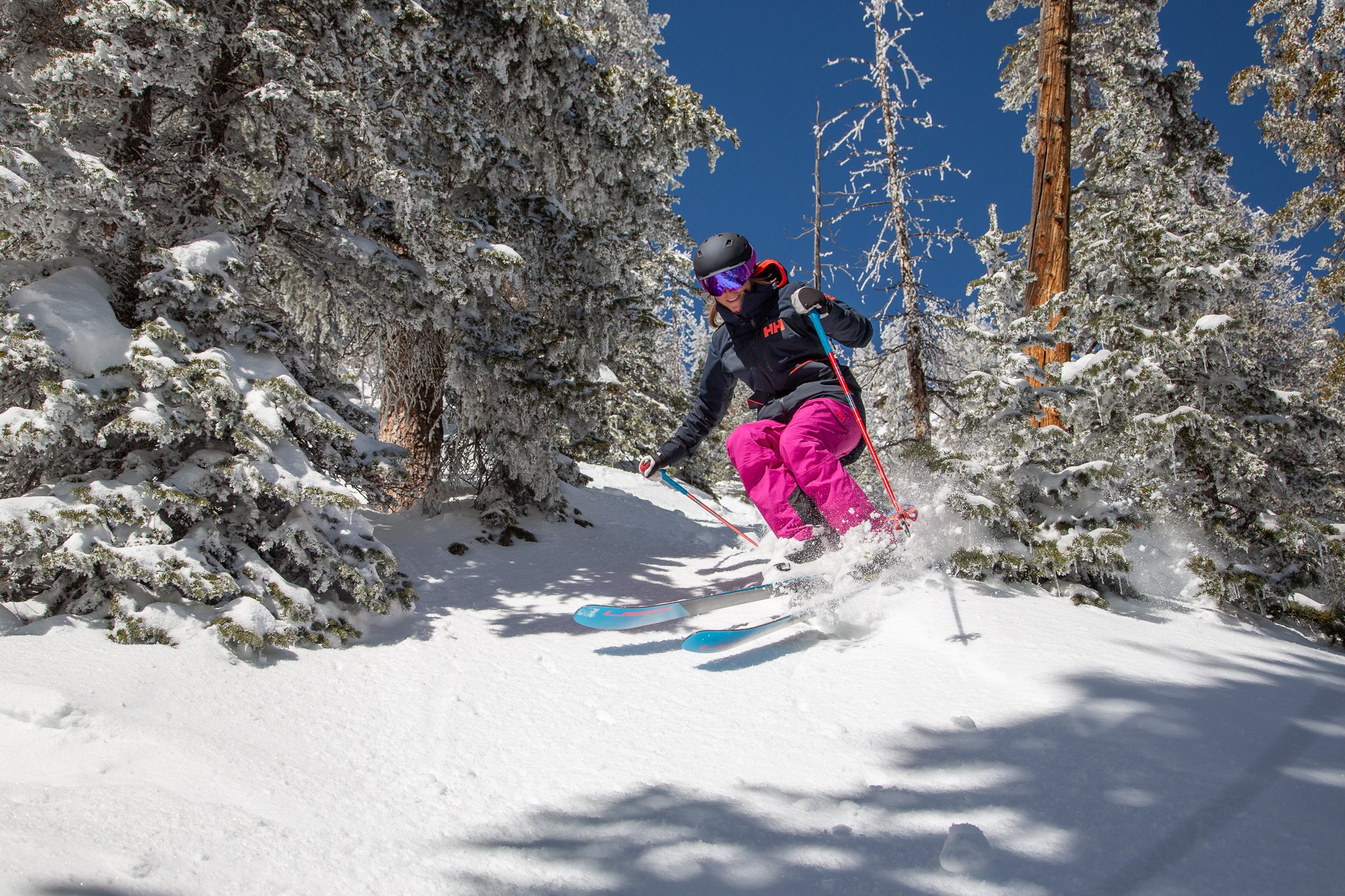
Testers determine how predictably a ski holds up in heavy and chopped-up snow and judge whether the ski makes crud-skiing easier. Skis that perform unpredictably in crud or don’t demonstrate enough power to bust through chopped-up snow score lower in the Crud Performance category.
What influences a ski’s ability to tackle crud?
- Skis that are a little heavier tend to perform better in crud because they allow skiers to charge through heavy and set-up snow.
- More generous tip (and tail) rocker keep skis closer to the snow surface instead of getting bogged down in the crud, making it easier to turn and pivot skis in crud.
Section divider
Stability at Speed
- Does the ski inspire confidence at speed?
- Does it provide a smooth, stable ride when making medium- to large-radius turns down the fall line?
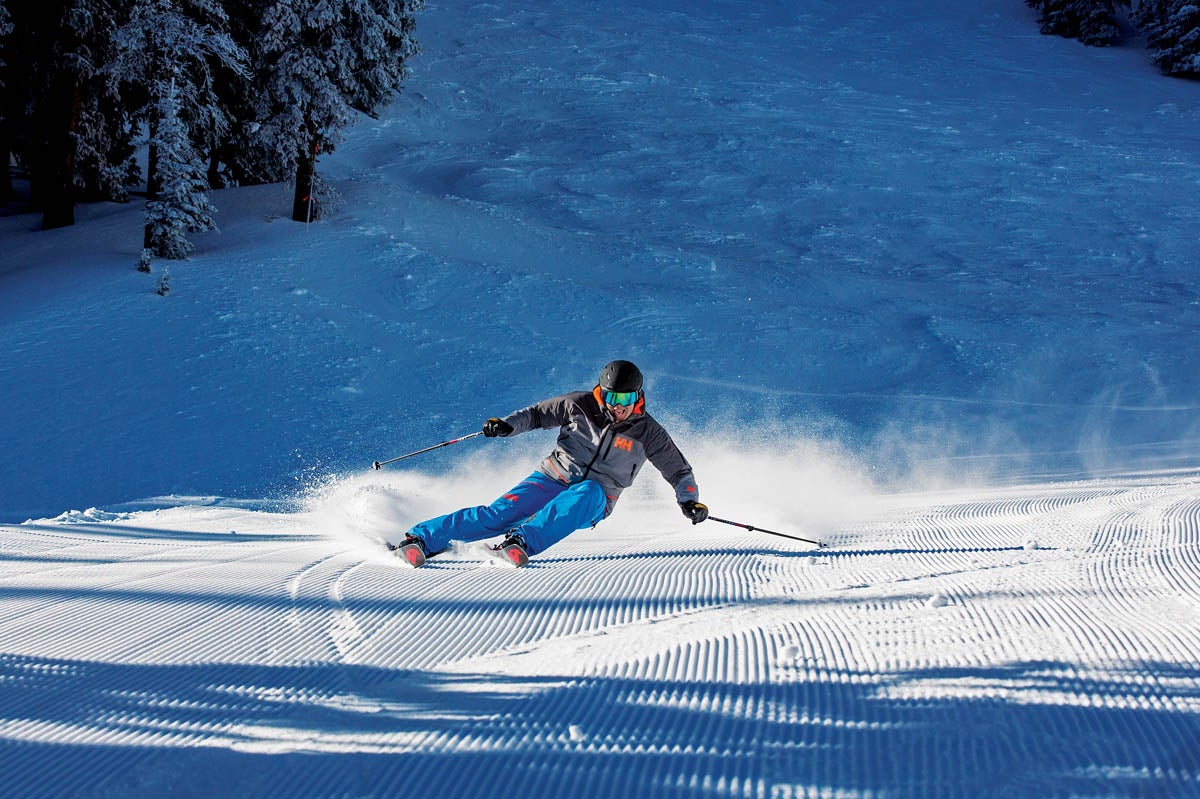
Testers judge whether they can trust the ski to perform in a consistent, predictable manner at high speed. Skis that chatter in the tip or act squirrelly on edge when pushed to perform at high speeds are scored lower in the Stability at Speed category.
What influences a ski’s stability at speed?
- Skis with metal in the core and heavier constructions tend to be more stable at speed.
- More camber underfoot and less rocker in the tip and tail generally make a ski more stable at speed because there is more effective edge.
- Skis with a larger turning radius are engineered to be skied at higher speeds.
Section divider
Quickness
- Does the ski respond intuitively to the skier’s movements?
- Can the ski turn on a dime?
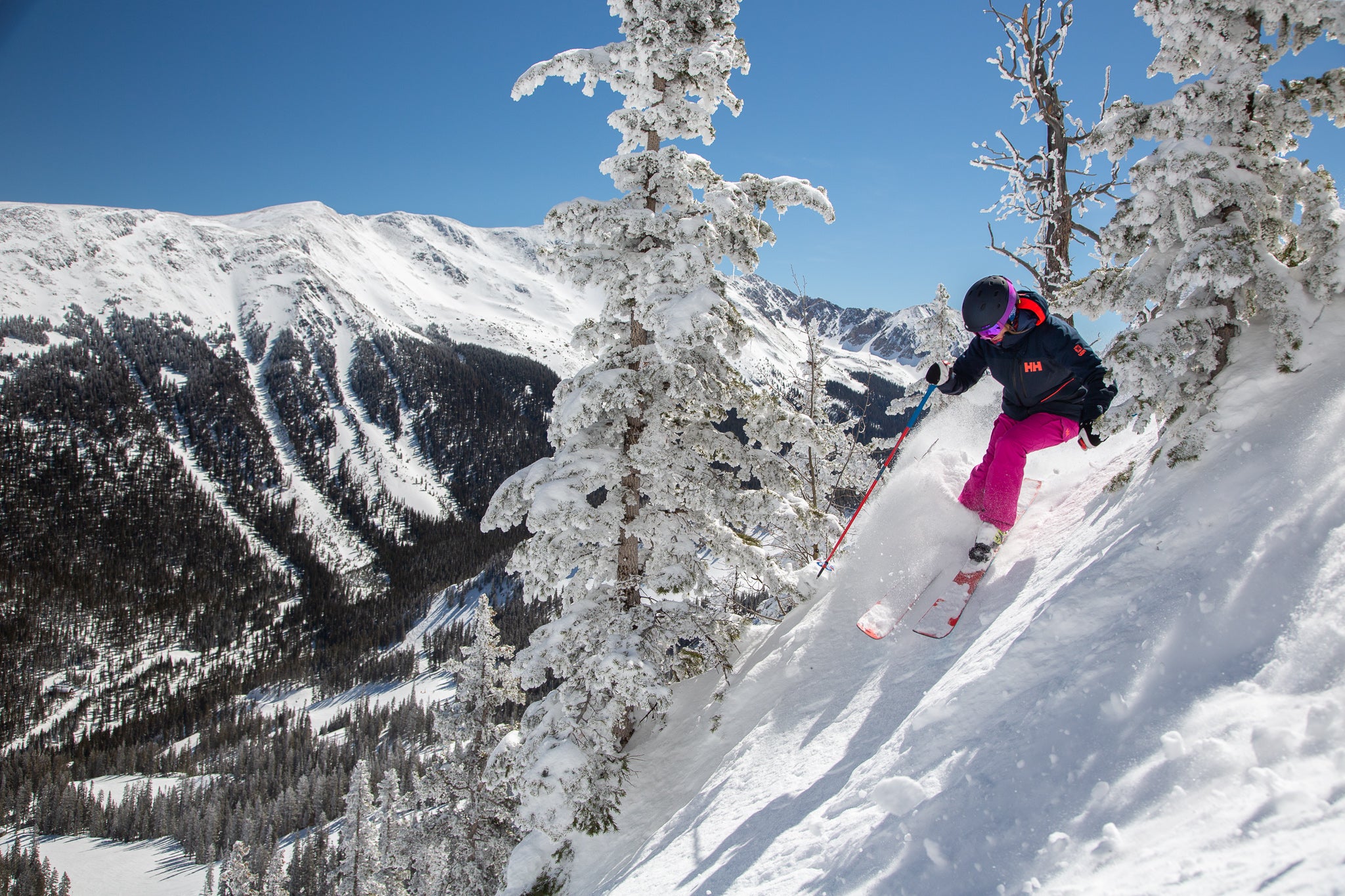
Testers gauge how maneuverable a ski is and how quickly it responds when the skier flexes and rolls their ankles. Skis that are sluggish to respond to the skier’s movements or require more effort to maneuver are marked lower in the Quickness category.
What influences a ski’s quickness or maneuverability?
- Skis with lighter constructions tend to be quicker and more maneuverable.
- Skis with a shorter turning radius (12m-16m) are designed to transition quickly from edge to edge.
- Shorter skis tend to be quicker.
- Skis with narrower waists (70mm-85mm) roll from edge to edge more quickly.
- Skis with a more generous rocker profile (and therefore less effective edge) tend to be more maneuverable and allow the skier to pivot the ski quickly from side to side.
Section divider
Playfulness
- Does the ski respond with energy from turn to turn?
- Is the ski poppy and does it offer lots of rebound?
- Is the ski quick and maneuverable?
- Does the ski accommodate a variety of turn shapes and skiing techniques?
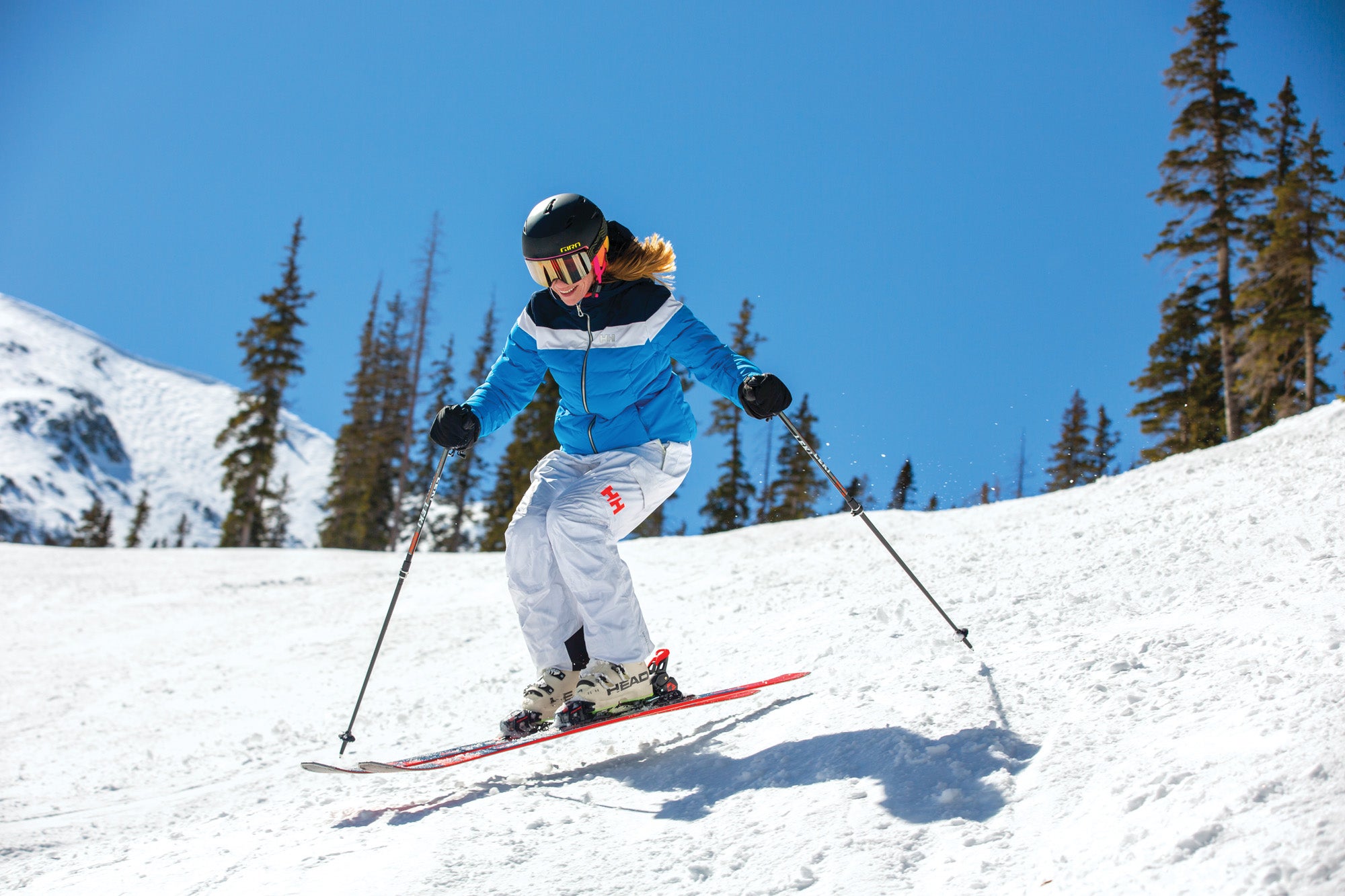
Testers judge how much pop and pizazz the ski exhibits. They’re looking for a ski that transmits energy and feels lively underfoot. Skis that are particularly damp or feel like lifeless planks underfoot score low in the Playfulness category.
What influences a ski’s playfulness?
- Some types of wood offer better flex and rebound than others; skis with caruba or poplar in the core tend to be lively and playful.
- Metals like Titanal and carbon make a ski damp and stable, but these constructions can sap some of the pop out of a ski.
- Skis with a shorter turn radius are designed to be particularly responsive and will often be more playful than skis with a wide turning radius.
Section divider
Flotation
- Does the ski stay close to the snow surface instead of sinking into the snow?
- Does the ski make skiing deep snow or powder manageable, effortless, and enjoyable?
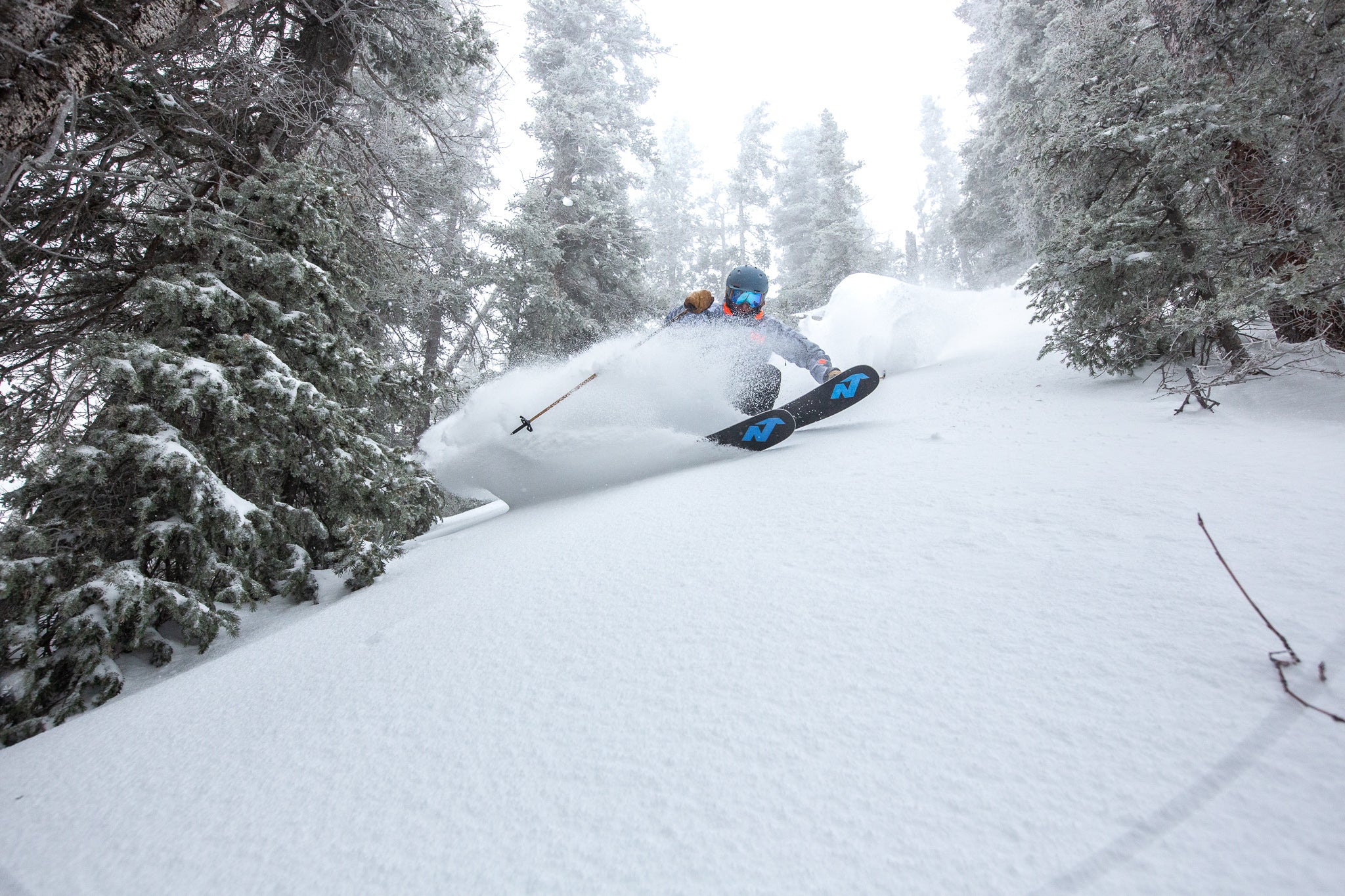
Testers judge how well the ski floats and how maneuverable it is in deep snow. Skis that don’t help the skier stay close to the snow surface and make turning in powder easy are ranked lower in the Flotation category.
What influences a ski’s ability to float in powder?
- Skis with lighter constructions prevent skiers from sinking into the snow.
- Wider-waisted skis (110mm-plus) create a wider platform for skiers to stand on and promote flotation in deep snow.
- Similarly, longer skis can help create a larger platform and keep skiers afloat in deep snow.
- A big shovel and generous rocker profile also help skis float on top of the snow rather than sink into it.
Section divider
Forgiveness
- Does the ski forgive user errors like imperfect technique, stance, etc.?
- Is the ski easy to bend, turn, and pivot?
- Does the ski make it easy to ski challenging terrain and snow conditions?
- Is the ski accessible to a wide range of skier abilities?
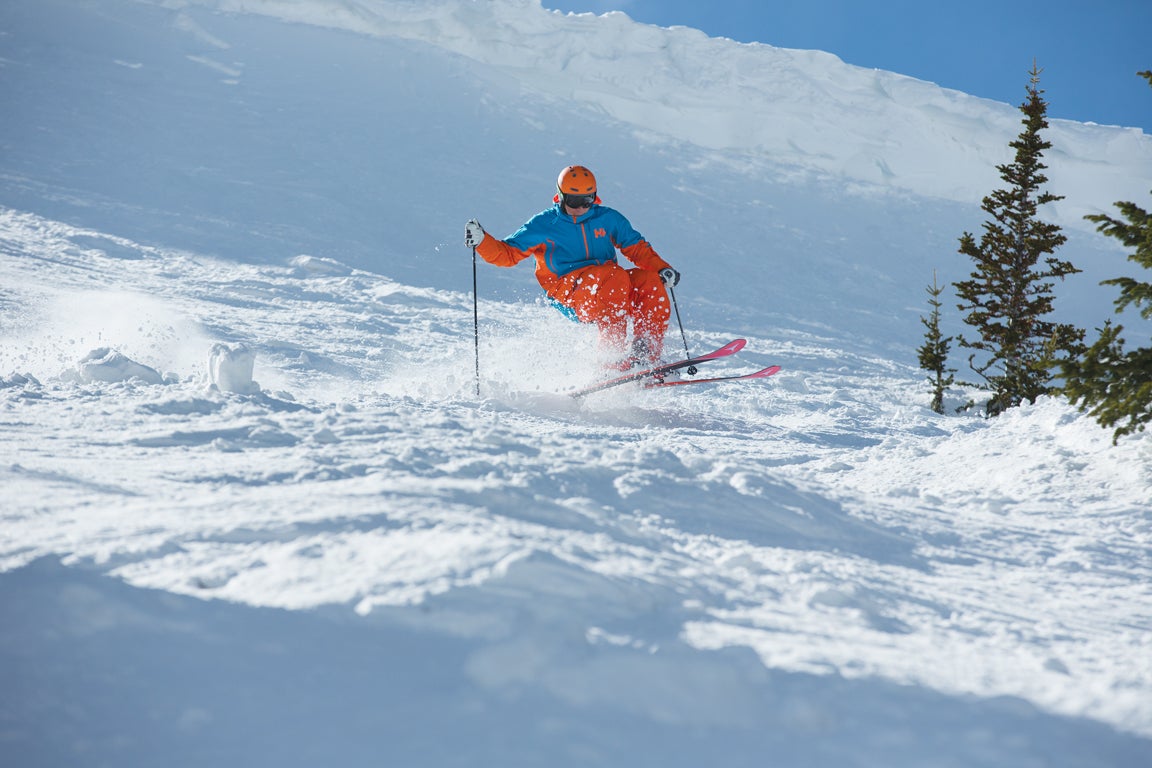
In this category testers gauge how user-friendly a ski is. They assess whether the ski makes turning, edging, and tackling unfavorable conditions easier. Skis that require a lot of effort or force to bend to the skier’s will or punish a skier’s imperfect technique or mistakes score lower in the Forgiveness category. Testers’ scores in this category tend to be more subjective, because “forgiveness” depends on a skier’s unique skill set.
What influences a ski’s forgiveness?
- Lighter skis tend to be more forgiving because they’re easier to maneuver; if skiers find themselves in trouble, they can more easily course-correct on lighter weight skis than on heavy skis.
- A metal core makes a ski stiffer, which can negatively impact a ski’s forgiveness.
- Skis with a more generous rocker profile require less precision in technique than cambered skis and allow skiers to pivot or skid turns when necessary.
- A wider-waisted ski tends to be more forgiving in variable snow conditions.
Section divider
Responsiveness
- When you pressure the ski, does it respond appropriately?
- Does the ski respond to pressure with rebound or does it absorb that pressure?
- Does the ski feel lively or lifeless?
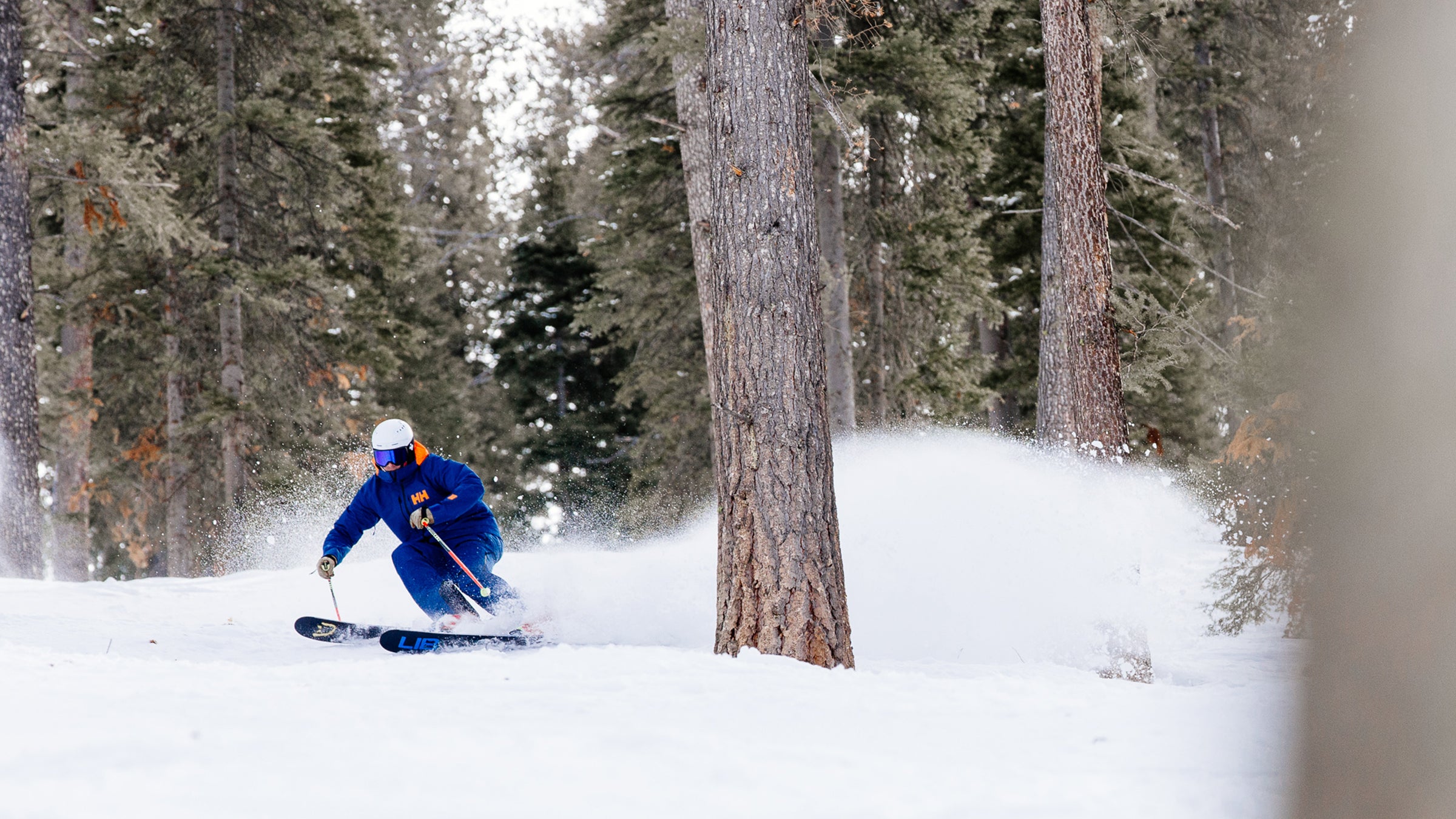
Some skis offer more immediate feedback than others, which is often a result of the ski’s core components and flex profile. When judging a ski’s responsiveness, testers asses how quickly and predictably a ski responds to the skier’s movements. Skis that are slow to respond or don’t offer much energy and feedback score low in the Responsiveness category.
What influences a ski’s responsiveness?
- Responsiveness is the result of the sum of all parts of the ski, from the core materials, edge construction, and sidecut
- Skis that incorporate materials with a high strength-to-weight ratio are generally more energetic and responsive than skis that incorporate heavy, thick materials
- Skis with more effective edge are likely to be more responsive than skis with a lot of tip and tail rocker
More Educational Ski Gear Coverage
How to Buy Skis
Demystifying the Snug Fit: How a Ski Boot Should Really Feel
Understanding Rocker vs. Camber Ski Technology
